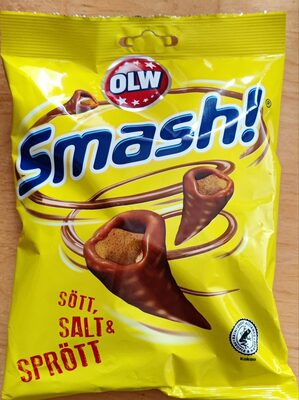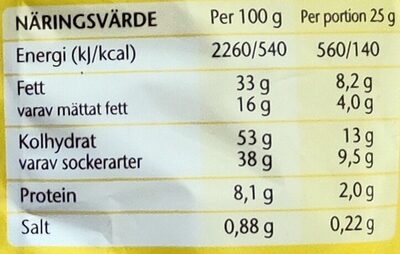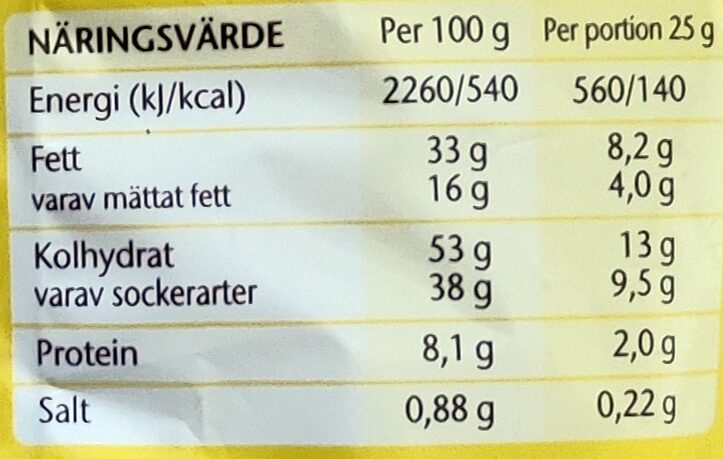Smash - OLW - 100 g
This product page is not complete. You can help to complete it by editing it and adding more data from the photos we have, or by taking more photos using the app for Android or iPhone/iPad. Thank you!
×
Streckkod: 7310520006851 (EAN / EAN-13)
Vanligt namn: Snacks av majs (28%) täckta med mjölkchoklad (72%).
Kvantitet: 100 g
Varumärken: OLW, Orkla, Orkla Confectionery & Snacks
Kategorier: Snacks, Salta snacks, Söta snacks, en:Cocoa and its products, Konfekt, Chokladgodis
Etiketter, certifieringar, utmärkelser:
en:Sustainable farming, en:Green Dot, Utan palmolja, en:Rainforest Alliance, UTZ Certified, UTZ Certified Cocoa


Butiker: Coop
Länder där såld: Sverige, Storbritannien
Matching with your preferences
Miljö
Förpackning
Transportation
Etiketter
Report a problem
Datakällor
Produkt tillagd den av kiliweb
Senast ändrad produktsida på av akitainu.
Produktsida också redigerad av inf, packbot, roboto-app, spotter, yuka.VGZvaVM0MWEvcVFEdTh3bjhSL2w1Tjk4bHNPSlJtZUtjdk1wSVE9PQ.












